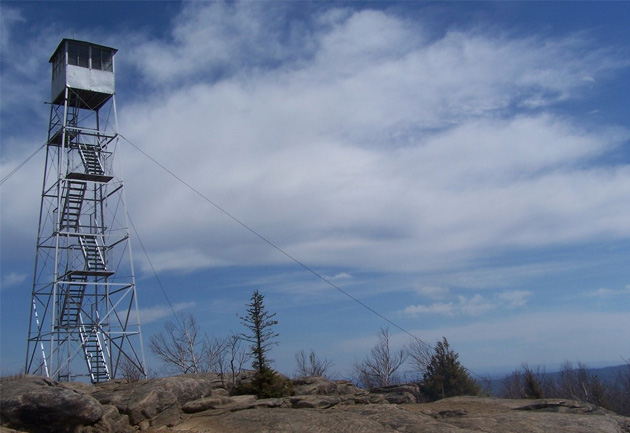The Adirondacks and the natural
force of fire have a long and complicated history. On the west coast, natural
fires were often controlled to the point where they were detrimental to the
health of the forests. Some tree species require the occasional burns to clear
out fallen trees and dead wood to allow for the growth of new seeds. Other species simply thrive in post fire
conditions. In other words, fire is a natural part of the life cycle and
succession of forests.
While fire is necessary for a park
and occurs naturally, it can grow into a dangerous threat because of human
activity. When logging and mining
reached new heights at the turn of the 20th century, fire reached
disastrous levels. In 1903 different forest fires in the Adirondacks and
Catskills burned alone 464,000 acres of land. Fire again reached disastrous
proportions. Homes were burned, residents had to be evacuated, and the smoke
could be seen as far away as Washington. D.C.
In both years, while the weather was dry, human activity was responsible.
Sparks from the engines of coal driven trains caught on the dry leaves and dead
wood that had been carelessly and improperly disposed of by the lumberjacks and
timber companies who had no need of it. These factors combined with the drought
led to the massive forest fires.
However, following these fires,
people were convinced of the need to increase fire protection and prevention. In
1909, new laws were passed and the construction of fire towers began. These
measures have helped reduce the frequency and destructiveness of fires in the
park dramatically. Nevertheless, in the modern era, the park faces many new
challenges surrounding fires. Climate change is a massive threat. Not only does
the increased frequency and duration drought and dryness increase the frequency
and damaged caused by forest fires it also impacts the ability of the forest to
recover. Fires are only helpful when
they enable new growth. However, if drought and dry years continue to occur
after the fire, new planet species will not be able to grow. In other words,
climate change could prevent Adirondack forest from recovering from fire damage
even as that damage becomes worse and worse. While the Adirondack forest does appear
relatively stable and protected today, the future is uncertain especially when
we are dealing with such a powerful and controllable force such as fire.


Sources:
http://www.americaslongleaf.org/media/11802/early-successional-habitat.
http://www.northcountrypublicradio.org/news/story/29652/20150929/forest-rangers-battling-100-acre-wild-fire-in-adirondacks
http://www.adirondack.net/images/fire-tower-hadley-adks.jpg












